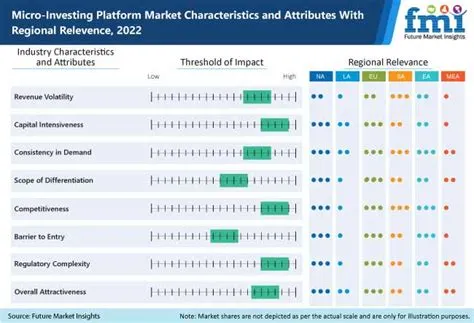Hey there, fellow investors! Ever wonder how your friends’ investment choices subtly (or not-so-subtly!) influence your own? We’re diving into the fascinating world of micro-investing-trends">micro-investing-tools">micro-investing-strategies">micro-investing-risks">micro-investing-platforms">micro-investing-basics">micro-investing and the powerful role peer influence plays. Think of it like this: we’re all social creatures, and our financial decisions are no exception. Let’s explore seven key trends shaping how we invest, inspired by the people around us.
1. The Bandwagon Effect: Jumping on the Hype Train
Have you ever noticed how quickly a certain stock or investment strategy becomes incredibly popular amongst your friends? That’s the bandwagon effect in action. It’s the human tendency to follow the crowd, assuming that if everyone else is doing it, it must be a good idea. In micro-investing groups, this manifests as a rush to invest in the latest “hot” stock, often fueled by social media hype and group chats buzzing with excitement. But remember, just because something’s popular doesn’t make it profitable. Think of it like a trendy restaurant – everyone’s there, but is the food actually good?
2. Social Proof: Seeing is Believing (and Investing)
Social proof is a powerful psychological principle that suggests we tend to trust things that other people approve of. In micro-investing groups, this translates to a reliance on others’ experiences and successes. If someone in your group boasts about a significant return on a particular investment, it’s tempting to follow suit. It’s like seeing a long line at a restaurant – you assume it must be good because so many people are waiting. While social proof can be helpful, it’s crucial to do your own research and not blindly follow the crowd. Don’t let the hype overshadow your own due diligence.
3. The Fear of Missing Out (FOMO): Keeping Up with the Joneses (and their Investments)
FOMO is a potent force in many aspects of life, and micro-investing is no exception. Seeing your friends achieve financial gains can trigger a fear of missing out on similar opportunities, pushing you to make hasty investment decisions. This often leads to impulsive buys based on emotion rather than sound financial planning. Imagine it like this: You see your friend post a picture of their brand-new car, and suddenly that “sure-thing” investment looks way more appealing, even if you haven’t researched it properly. Try to avoid FOMO-driven investments; it’s a recipe for regret.
4. Information Cascades: Trusting the Word of the Wise (or So You Think)
Information cascades occur when people adopt the beliefs and actions of others, even if they have doubts. In micro-investing groups, this might involve blindly following the investment advice of a perceived “expert” within the group. This individual may have a successful track record, but their success doesn’t guarantee future wins. Remember, everyone can make mistakes, and even the most knowledgeable investors experience losses. Treat every piece of advice with a healthy dose of skepticism and conduct your research independently.
5. Upward Social Comparison: The “Keeping Up With the Joneses” Effect on Investments
Upward social comparison involves comparing ourselves to those we perceive as being more successful than ourselves. In micro-investing groups, this can lead to unhealthy competition and a focus on accumulating wealth faster than others. This pressure can lead to high-risk investments, often without the necessary knowledge or understanding. Imagine comparing your modest garden to your neighbor’s lavish landscape – it’s easy to feel inadequate, and the same applies to investment returns. Focus on your own financial goals rather than trying to outdo your peers.
6. Conformity: Going With the Flow, Even When You Have Doubts
Conformity is the tendency to align our behavior with group norms. In micro-investing groups, this can manifest as suppressing your own doubts or concerns about an investment because everyone else seems enthusiastic. It’s like being in a meeting where everyone agrees on a decision, even if you secretly disagree. But speaking up is important! If you have reservations, voice them and don’t let peer pressure override your judgment.
7. Network Effects: The Power of Shared Knowledge and Experience
While peer influence can be negative, it also has its positive side. Network effects refer to the benefits derived from a large and active group. In micro-investing groups, this means access to shared knowledge, diverse perspectives, and collective learning experiences. This can lead to better-informed investment decisions and a supportive environment for growth. It’s like having a team of friends brainstorming ideas – combining your collective knowledge can produce better results than going it alone.
Conclusion
Peer influence is a powerful force in micro-investing, shaping our decisions in both positive and negative ways. Understanding these trends is crucial to navigating the complexities of the investment world. While it’s important to learn from others and leverage the benefits of community, remember to critically evaluate information, conduct your own research, and always prioritize your own financial goals above the pressure to conform. Investing should be a journey of learning and growth, not a race to keep up with the Joneses.
FAQs
1. How can I avoid the negative aspects of peer influence in micro-investing? The key is to cultivate a critical mindset. Always conduct independent research, question claims, and don’t be afraid to disagree with the group. Remember, you’re responsible for your own financial decisions.
2. Are micro-investing groups always a bad idea? Not at all! They offer valuable opportunities for learning, networking, and support. The key is to find a group that fosters healthy discussion and critical thinking, rather than blind conformity.
3. What are some strategies for making informed investment decisions despite peer pressure? Set personal investment goals, diversify your portfolio, and stick to your plan. Don’t let others’ successes or failures derail your strategy.
4. How can I tell if a micro-investing group is a good fit for me? Look for groups that prioritize education and responsible investing. Avoid groups that promote get-rich-quick schemes or encourage reckless behavior.
5. What resources can I use to conduct independent research on investments? Numerous reputable sources are available, including financial news websites, brokerage research platforms, and government publications. Always cross-reference information from multiple sources before making any investment decisions.

